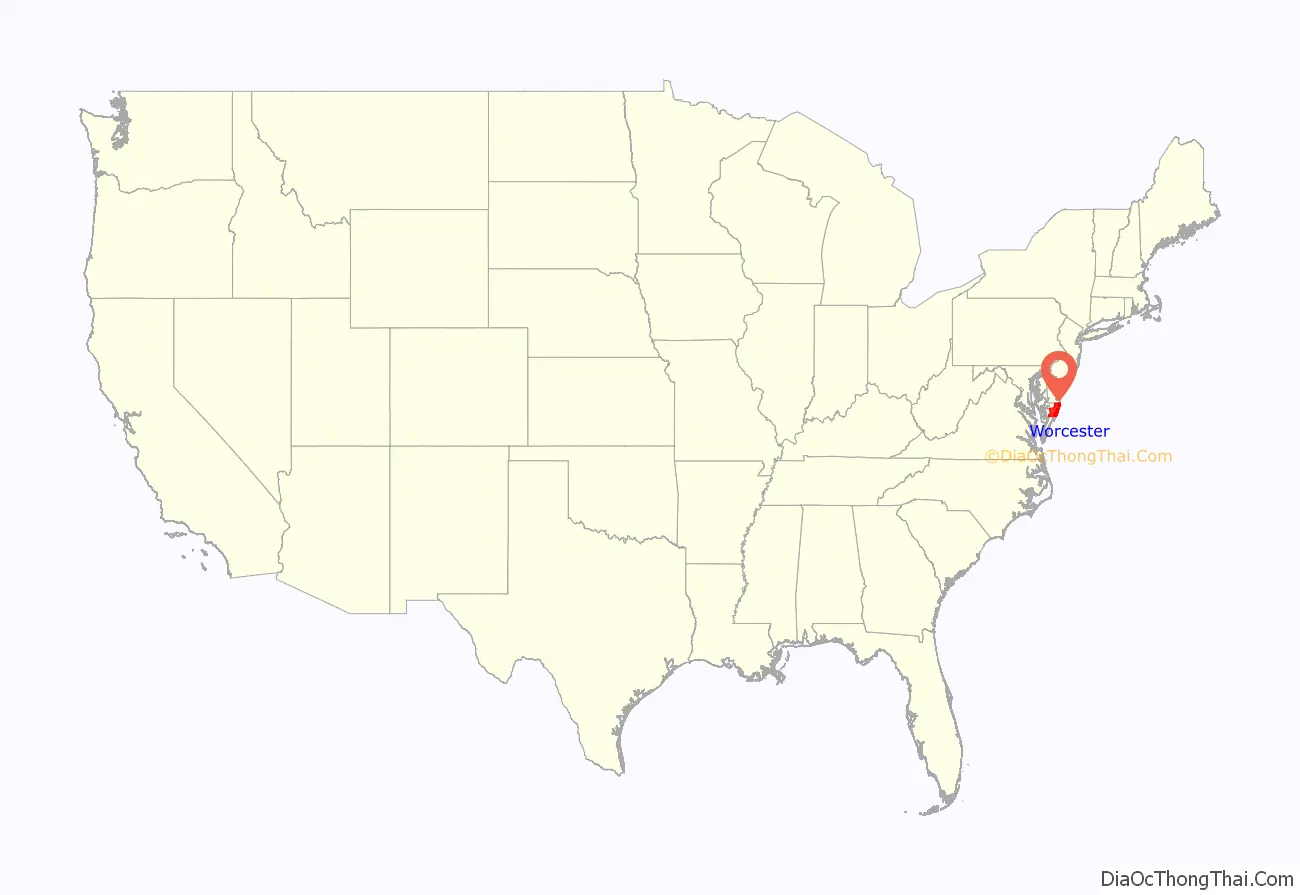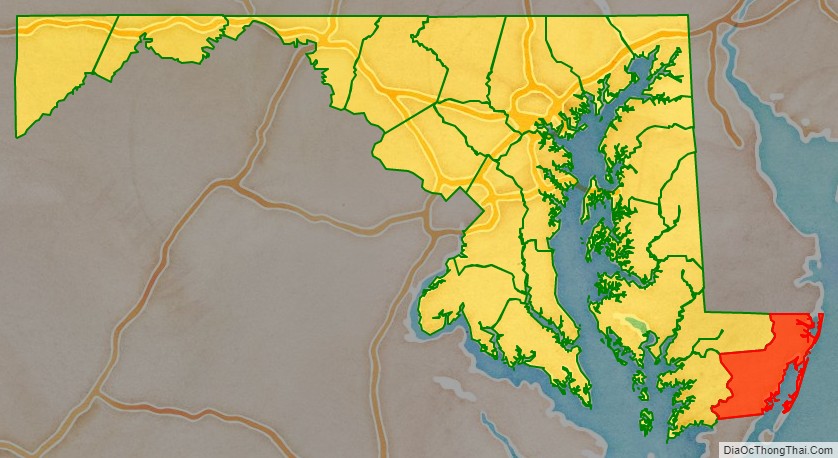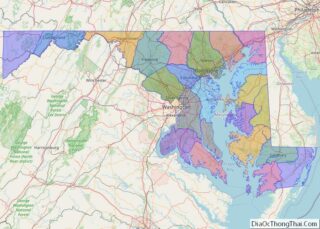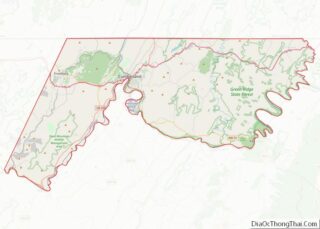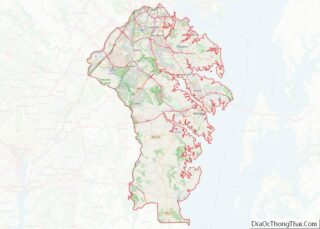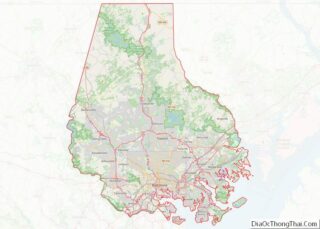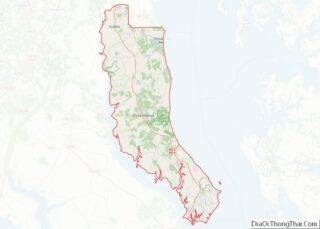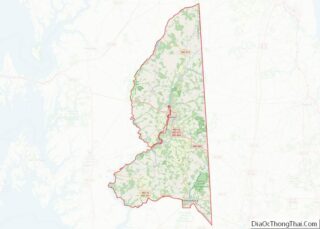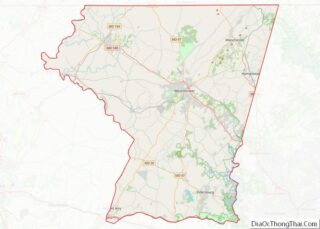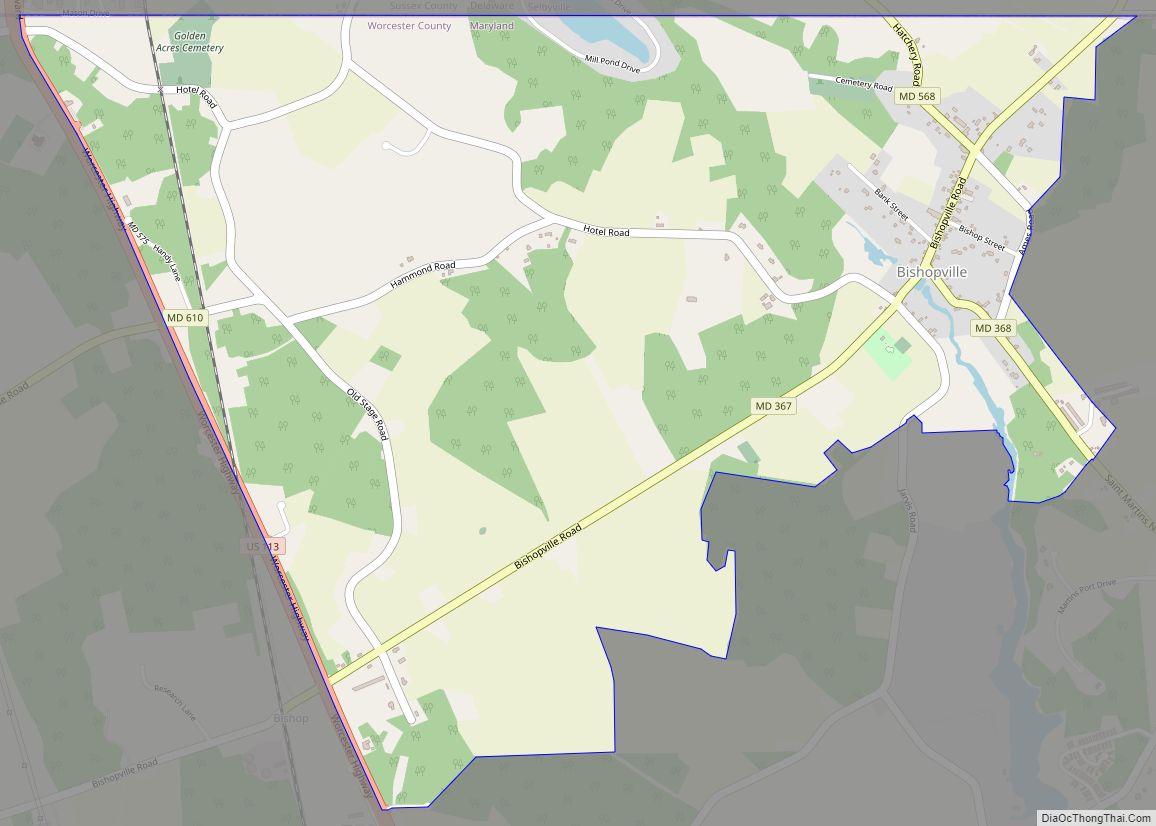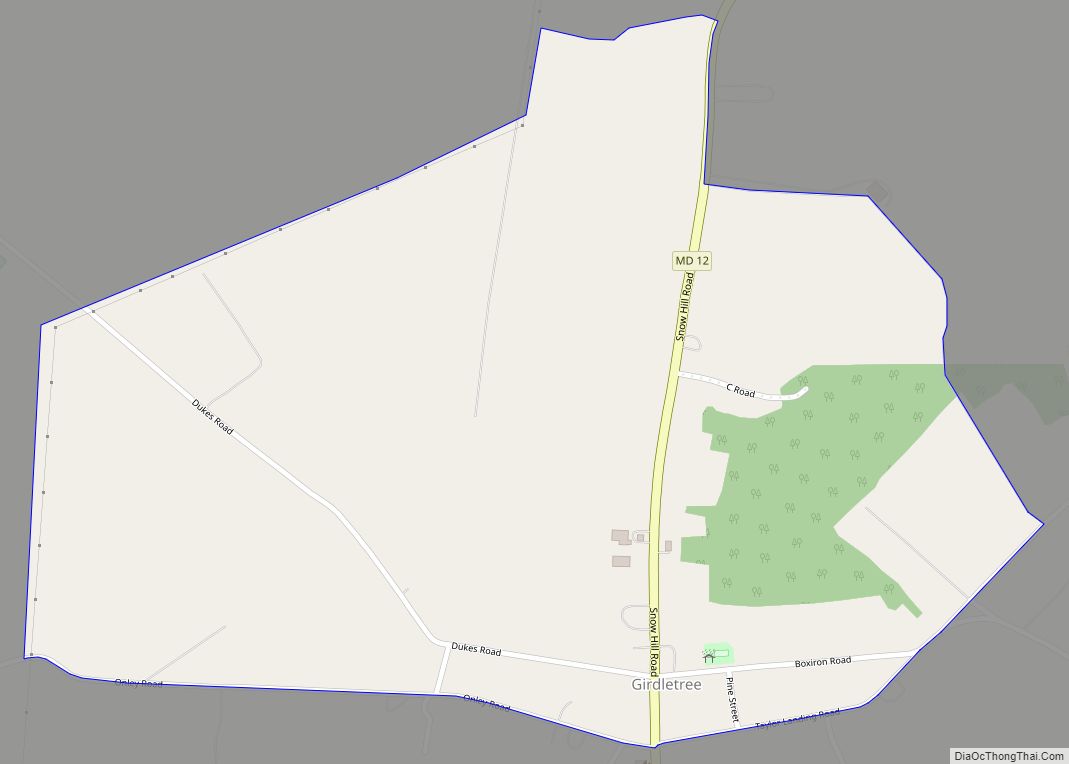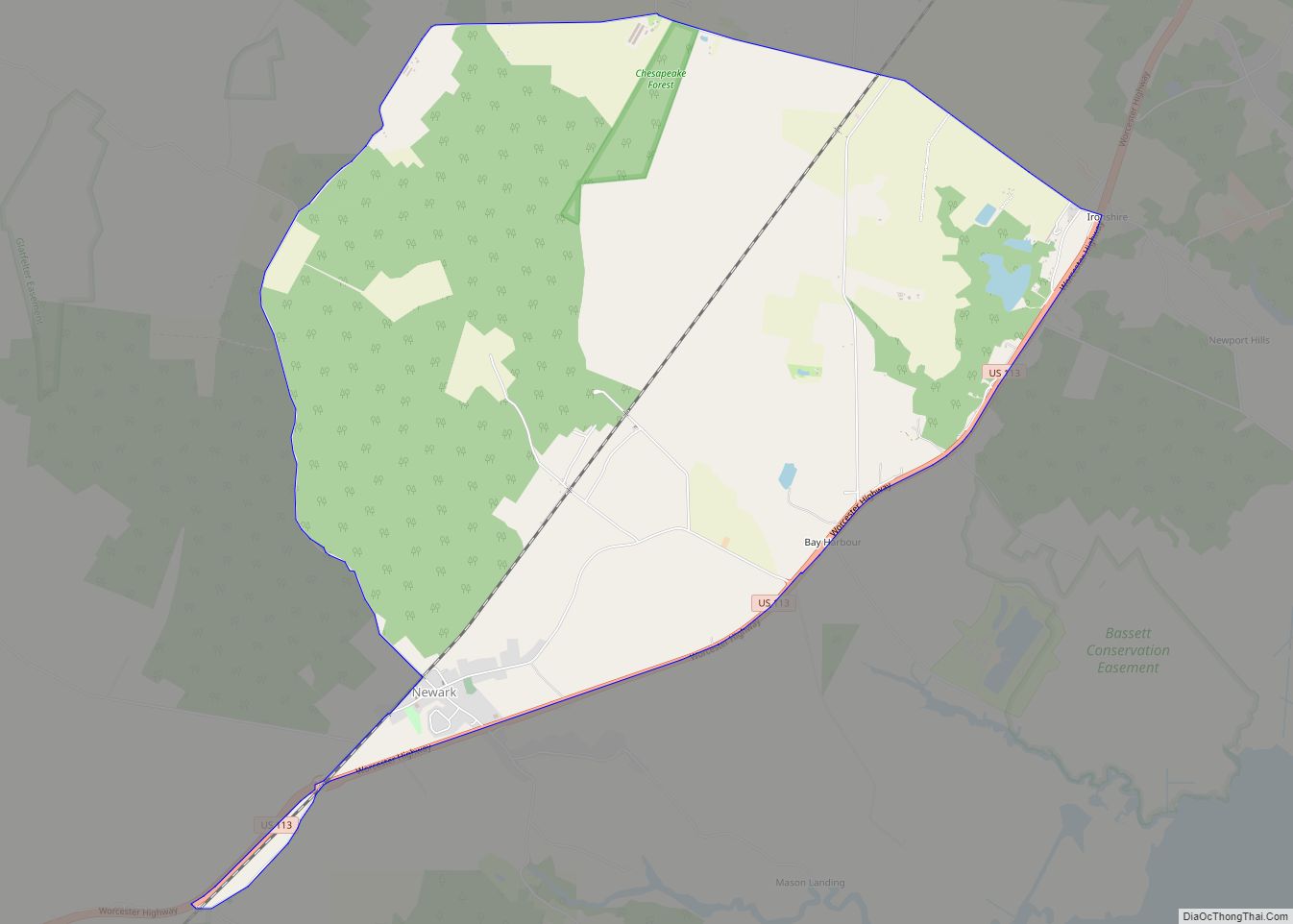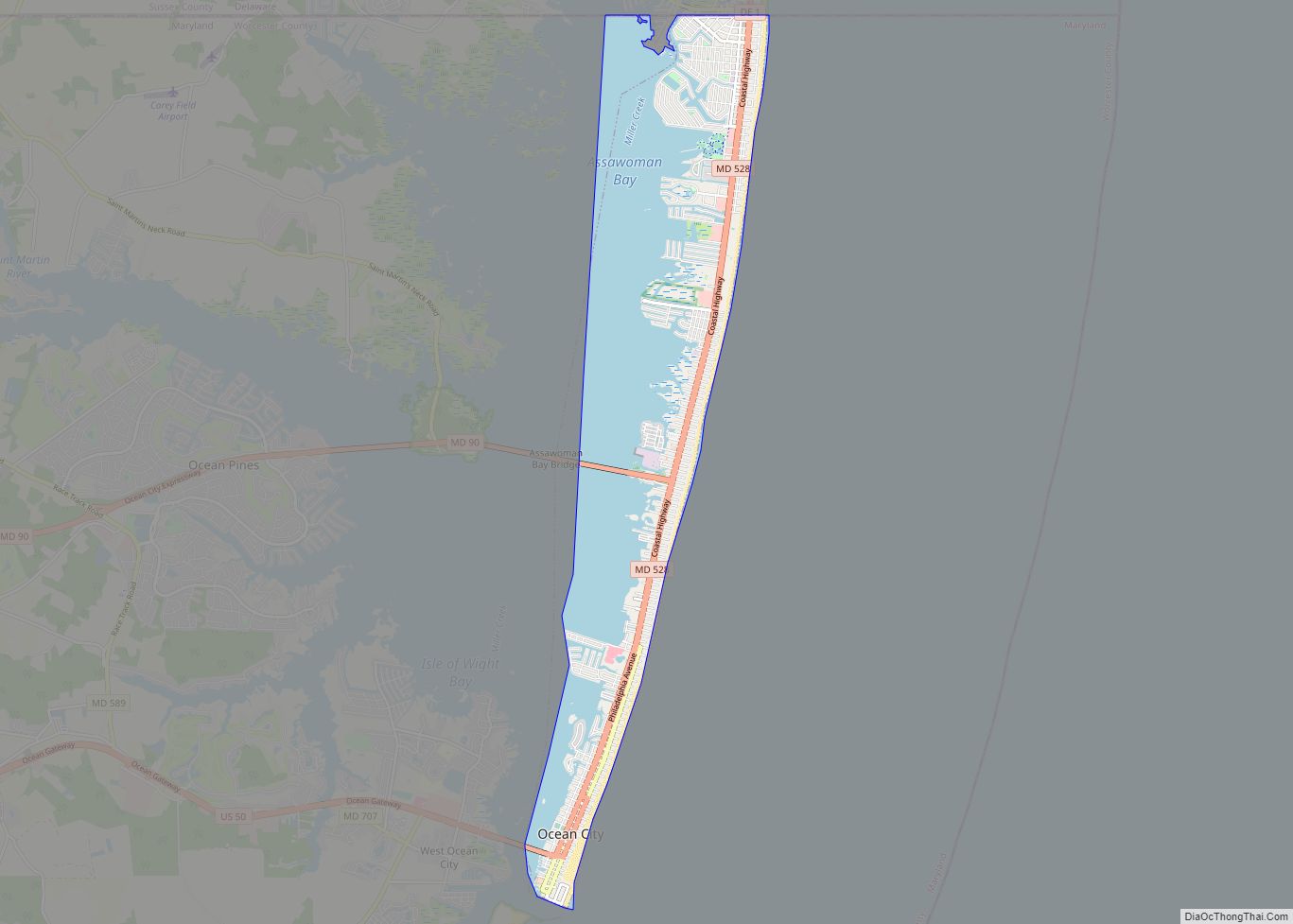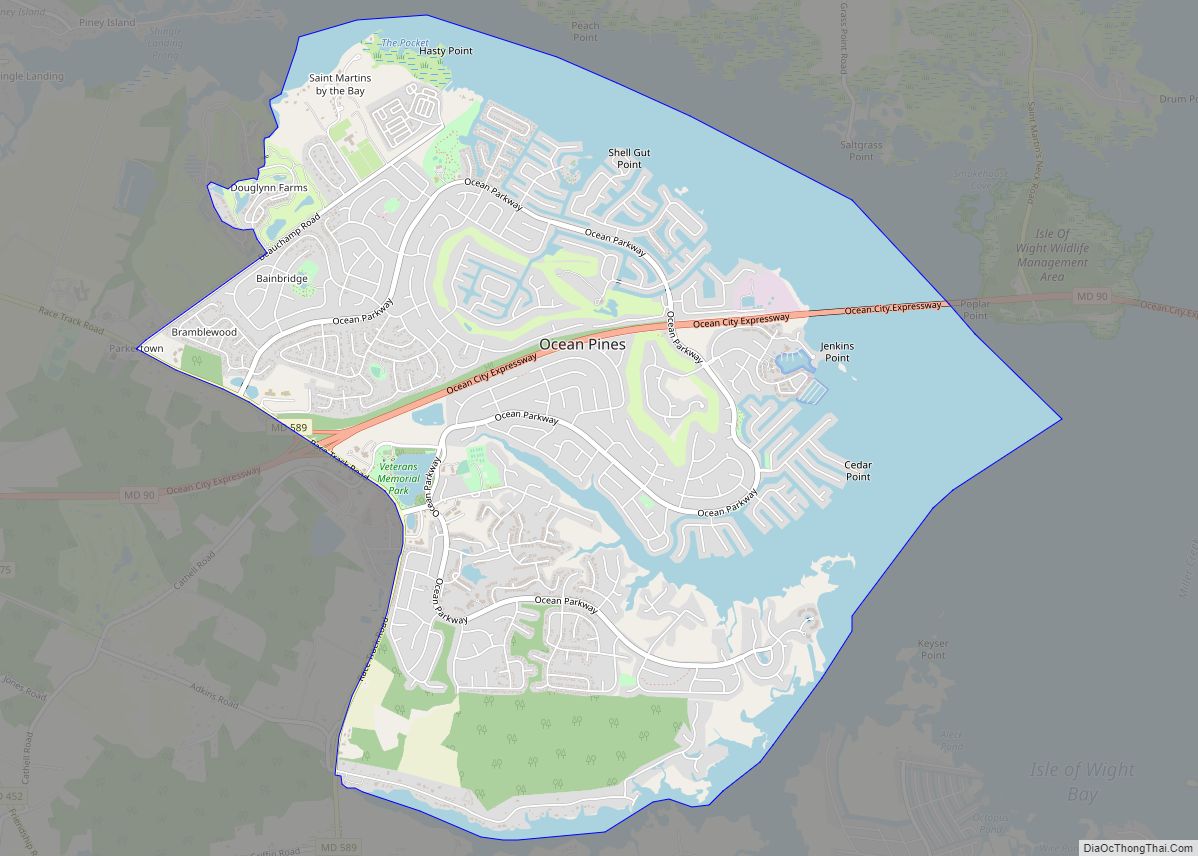Worcester County /ˈwʊstər/ is the easternmost county of the U.S. state of Maryland. As of the 2020 census, the population was 52,460. Its county seat is Snow Hill.
It is the only county of Maryland that borders the Atlantic Ocean, and the only county bordering both Delaware and Virginia. The county was named for Mary Arundell, the wife of Sir John Somerset, a son of Henry Somerset, 1st Marquess of Worcester. She was sister to Anne Arundell (Anne Arundel County), wife of Cecil Calvert, 2nd Baron Baltimore (Cecil County), the first Proprietor and Proprietary Governor of the Province of Maryland.
Worcester County is included in the Salisbury, MD-DE Metropolitan Statistical Area. The county includes the entire length of the state’s ocean and tidewater coast along the Intracoastal Waterway bordering Assawoman Bay, Isle of Wight Bay, Sinepuxent Bay, and Chincoteague Bay between the sand barrier islands of Fenwick Island and Assateague Island bordering the Atlantic Ocean coast. It is home to the popular vacation resort area of Ocean City, founded 1875, as well as wild habitats on the primitive wilderness areas on Assateague Island and in the Pocomoke River and Swamp.
| Name: | Worcester County |
|---|---|
| FIPS code: | 24-047 |
| State: | Maryland |
| Founded: | 1742 |
| Named for: | Family of Marquess of Worcester |
| Seat: | Snow Hill |
| Total Area: | 695 sq mi (1,800 km²) |
| Land Area: | 468 sq mi (1,210 km²) |
| Total Population: | 52,460 |
| Population Density: | 75/sq mi (29/km²) |
| Time zone: | UTC−5 (Eastern) |
| Summer Time Zone (DST): | UTC−4 (EDT) |
| Website: | www.co.worcester.md.us |
Worcester County location map. Where is Worcester County?
History
Worcester County was created by the division of the formerly larger Eastern Shore’s Somerset County in 1742. The county seat, which was previously located near the confluence of Dividing Creek with the Pocomoke River, was later transferred to the river port of Snow Hill, at the head of navigation of the Pocomoke, now near the center of the new county.
Both the areas of Somerset and Worcester Counties were divided into old colonial divisions of “hundreds”, from south to north: Mattapony, Pocomoke, Boquetenorton, Wicomico, and Baltimore Hundreds. Later subdivisions of these hundreds added Pitts Creek, Acquango, Queponco, and Buckingham & Worcester Hundreds, all of which in turn eventually became election districts for the newly independent state following American independence. Competing territorial claims between the Proprietor family of the Calverts and the Lords Baltimore in the old Province of Maryland and the Penns of the neighboring Province of Pennsylvania to the north and of what later became the state of Delaware to the east led to the surveying of Worcester County’s northern border, the “Transpeninsular Line” in 1751, though boundary disputes continued through the rest of the colonial period, not totally settled until the work of the famous Charles Mason and Jeremiah Dixon with their “Mason–Dixon line”. In 1779, Stephen Decatur, the famous United States Navy officer and hero of the First Barbary War and the Second Barbary War in the early 1800s, and leading into the War of 1812, was born at Sinepuxent, near what is today the town of Berlin.
Originally settled by European immigrants of British and Irish stock, along with slaves of mainly West African descent, Worcester County was divided during the colonial period into several Church of England parishes, though Quakers, Presbyterians, and later Methodists also set up meeting houses. Like the border states in general, Worcester County had a high proportion of free people of color for many decades before the Civil War, due in part to the influence of initially Quakerism, and later Methodism. During the 1840s and 1850s, Worcester County, Maryland had the highest portion of free people of color per capita out of any county in Maryland. It was one of the few counties in the state with an active abolitionist movement. Most abolitionists in the county were Methodists, Quakers and Presbyterians, however the slave-owning community was overwhelmingly Baptist and Catholic. First-generation immigrants from England and Germany were also overwhelmingly abolitionists in Worcester County. During the civil war in Worcester County first generation immigrants from England and Germany were known for siding with the Union whereas first generation Irish Catholic immigrants from Ireland overwhelmingly sided with the Confederacy and were known for being some of the leaders of the Copperheads or “Peace Democrats” in Worcester County.
Worcester County was primarily an agricultural area from its inception, first planting tobacco, but when the quality produced in the area’s sandy soil could not compete with that produced elsewhere, they began growing wheat, corn, and livestock. Early industrial activity included the smelting of bog iron ore in a brick blast furnace to make pig iron at Furnacetown in the first half of the 19th century. The presence of large bald cypress swamps along the Pocomoke River led to logging, the manufacture of roofing shingles, and shipbuilding along the river at Newtown (later Pocomoke City). The arrival of steam-powered water transport and then the railroad opened urban markets to another of Worcester County’s principal products: seafood, particularly shellfish. Oysters, clams, and crabs were shipped to Baltimore, Philadelphia, and New York. Soon after the Civil War (to each side of which Worcester County sent soldiers), parts of both Worcester and Somerset Counties were combined to create, in 1867, Wicomico County. Also in the later 19th century, the seaside resort of Ocean City was founded.
Truck farming and the canning industry came to the fore during the early 20th century. However, both the seafood industry and truck farming declined after mid-century, due to overfishing on the one hand, and the opening of California‘s Central Valley to irrigated agriculture on the other, but the advent of the large-scale poultry industry filled this gap. The expansion of Ocean City since the 1960s has turned the northern part of the county from a summer resort to an expanding year-round community.
Two major storms influenced the course of Worcester County history in the 20th Century: the hurricane of August 1933, which badly damaged Ocean City and Public Landing, but also cut the Ocean City Inlet and passageway between the inner bays west of the sandy barrier islands of Assawoman Bay, Sinepuxent Bay and Assateague Channel and Bay and the Atlantic Ocean, and the later Ash Wednesday “Nor’easter” of 1962, which destroyed much of the residential development on Assateague Island and led to the creation of the National Seashore and State Park.
The county has a number of properties on the National Register of Historic Places.
Worcester County Road Map
Geography
According to the U.S. Census Bureau, the county has a total area of 695 square miles (1,800 km), of which 468 square miles (1,210 km) is land and 227 square miles (590 km) (33%) is water. It is the third-largest county in Maryland by total area.
The terrain is mostly level and coastal. The lowest elevation is sea level along the Atlantic Ocean and the highest elevation is 49 ft (15 m) in the northwestern part of the county along State Route 12 just south of the Wicomico County line.
National protected area
- Assateague Island National Seashore (part)
- Chincoteague National Wildlife Refuge (part)
Adjacent counties
- Accomack County, Virginia (south)
- Somerset County (west)
- Sussex County, Delaware (north)
- Wicomico County (northwest)
Climate
The county has a humid subtropical climate (Cfa.) All monthly temperature averages are above freezing and eight months in most of the county are above 50 °F (10 °C.) Three months are above 22 °C (71.6 °F.)
